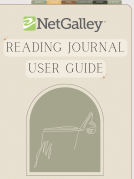
How to Read the Landscape
A crash course in interpreting the great outdoors
by Robert Yarham
This title was previously available on NetGalley and is now archived.
Send NetGalley books directly to your Kindle or Kindle app
1
To read on a Kindle or Kindle app, please add kindle@netgalley.com as an approved email address to receive files in your Amazon account. Click here for step-by-step instructions.
2
Also find your Kindle email address within your Amazon account, and enter it here.
Pub Date 2 Apr 2018 | Archive Date 26 Jun 2018
Quarto Publishing Group - Ivy Press | Ivy Press
Talking about this book? Use #HowToReadTheLandscape #NetGalley. More hashtag tips!
Description
How to Read the Landscape will change the way you look at the world, by presenting a visual vocabulary with which to understand the land beneath your feet. The book explains the principles of geography, geology, and geomorphology, and shows how a basic understanding of geological timescale, plate tectonics, and landforms can help you to “read” the great outdoors. It then presents a series of classic land forms and features, and uses beautiful progressive artworks to demonstrate the processes by which they were created. The reader will learn to interpret the distinctive shapes of cliffs and coastlines, mountains and hills, valleys and plateaus; to find clues to weather and water erosion; to read rock strata, minerals, and fossils; and to both use and draw maps. A primer and a field guide, How to Read the Landscape will enliven and inform your every future journey, from a hike in the countryside to a flight over the Rockies.
Available Editions
| EDITION | Other Format |
| ISBN | 9781782406020 |
| PRICE | US$14.99 (USD) |
| PAGES | 256 |












